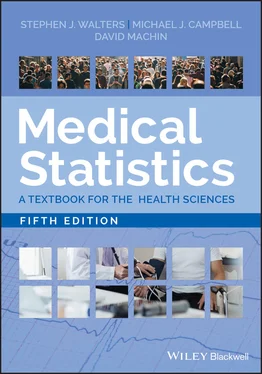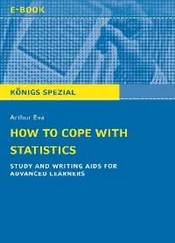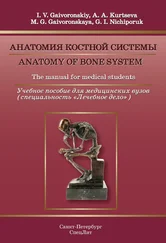16 Chapter 17Table 17.1 Mean SF‐36 pain scores over time by treatment group with all valid...Table 17.2 Mean SF‐36 pain scores over time by treatment group with patients ...Table 17.3 Response features suggested in Matthews et al. (1990).Table 17.4 Unadjusted and adjusted differences in mean follow‐up SF‐36 pain o...Table 17.5 Poisson regression of the number of exacerbations treated with IV ...Table 17.6 Missing data pattern from the low back pain trial.Table 17.7 Baseline characteristics of patients by treatment group.Table 17.8 Baseline characteristics of all randomised patients ( N = 239) by t...Table 17.9 Observed and imputed Prolapse and Incontinence Sexual function Ques...Table 17.10 Distance walked, in metres, on asix‐minute walking test (6M...Table 17.11 Bootstrap 95% confidence intervals for the mean difference in dis...
17 Chapter 18Table 18.1 Mobile phone based interventions for smoking cessation.Table 18.2 Output from meta‐analysis programme.Table 18.3 Comparison of MI versus no treatment with an outcome of smoking ce...
18 Chapter 19Table 19.1 Method of delivery of births at NHS hospitals in England in 2016 a...Table 19.2 Summary statistics for SF‐36 Mental Health dimension score at six ...Table 19.3 Mean SPADI scores over time by randomised treatment group from the...Table 19.4 Mean SPADI scores over time by randomised treatment group from the...Table 19.5 Birthweight and one‐month weight of 10 infants.Table 19.6 Mean distance walked pre, post, and change by treatment group in t...Table 19.7 Mean change in distance walked by treatment group in the GymBunny ...Table 19.8 Comparison of new joint failure rate at two years by type of joint...Table 19.9 Paired comparison of new joint failure rate at two years by type o...Table 19.10 Prevalence of obesity in adults aged 16 and over, with a valid he...
19 Appendix Table T1The Standard Normal distribution. The value tabulated is the probabilit... Table T2Student t ‐distribution. The value tabulated is t αsuch that if X i... Table T3The χ 2distribution. The value tabulated is χ 2(α), such that if X is di... Table T4 F ‐distribution. The value tabulated is F ( α, ν 1,ν 2) such that if X ... Table T5Random numbers table.
1 Chapter 1 Figure 1.1 Graphical representation of how confounding variables may influen...
2 Chapter 2 Figure 2.1 Broad classification of the different types of data with examples... Figure 2.2 Bar chart showing where 202 patients with corns were treated Figure 2.3 Pie chart showing where 202 patients with foot corns were treated... Figure 2.4 Clustered bar chart showing where 202 patients with foot corns we... Figure 2.5 Dot plot showing corn size (in mm) by randomised treatment group ... Figure 2.6 Histogram of baseline index corn size (in mm) for 200 patients wi... Figure 2.7 Box and whisker plot of size of corn at baseline (in mm) by rando... Figure 2.8 Scatter plot of baseline corn size by corn size at a three month ... Figure 2.9 Examples of two skewed distributions. Figure 2.10 Total steps per day for 100 days for one participant in a global... Figure 2.11 Anatomical site of corn on the foot by randomised group for 201 ...
3 Chapter 4 Figure 4.1 Three types of probability. Figure 4.2 Crude mortality rates in the United Kingdom from 1982 to 2016.... Figure 4.3 Examples of probability distributions. (a) Probability distributi... Figure 4.4 Binomial distribution for π = 0.25 and various values of n . The h... Figure 4.5 Poisson distribution for various values of λ. The horizontal scal... Figure 4.6 Relative frequency of IV treated exacerbations in 60 patients wit... Figure 4.7 Empirical relative frequency distributions of birth weight of 98 ... Figure 4.8 Empirical relative frequency distributions of birthweight with in... Figure 4.9 Distribution of birthweight in 3226 new‐born babies. Figure 4.10 The Normal probability distribution. Figure 4.11 Probability distribution functions of the Normal distributions w... Figure 4.12 Areas (percentages of total probability) under the standard Norm... Figure 4.13 Normal distribution curve for birthweight with a mean of 3.4 kg ... Figure 4.14 Examples of probability density/distribution functions for the t ...
4 Chapter 5 Figure 5.1 Taking a sample from the population and using the sample to estim...Figure 5.2 Histograms showing mean birthweight (kg) for 100 random samples o...Figure 5.3 Distribution of a large number of random digits (0–9).Figure 5.4 Observed distributions of the means of 500 random samples of size...Figure 5.5 Sampling distribution of the sample mean.Figure 5.6 One hundred different 95% confidence intervals for mean birthweig...
5 Chapter 6Figure 6.1 Histograms for the distance walked, in metres, on an ESWT in 161 ...Figure 6.2 Possible errors arising when performing a hypothesis test.Figure 6.3 Use of confidence intervals (CIs) to help distinguish statistical...Figure 6.4 Distance walked example: clinical importance and statistical sign...
6 Chapter 7Figure 7.1 Statistical methods for paired data or paired samples.Figure 7.2 Histograms of the VAS pain score at baseline, three‐month follow‐...Figure 7.3 Statistical methods for comparing two independent groups or sampl...Figure 7.4 Histograms of six‐month PHQ‐9 score by the intervention group ( N ...
7 Chapter 9Figure 9.1 Scatter diagram of the relationship between systolic and diastoli...Figure 9.2 Scatter plots showing data sets with different correlations: (a) Figure 9.3 Examples where the use of the correlation coefficient is not appr...Figure 9.4 A scatterplot of birthweight and gestation in 98 preterm infants ...Figure 9.5 A scatterplot of birthweight and gestation in 98 preterm infants ...Figure 9.6 A scatterplot of birthweight and gestation in 98 preterm infants ...Figure 9.7 Predicted birthweight for a baby of 30 weeks' gestation.Figure 9.8 Scatter plot of residuals versus gestation from the linear regres...Figure 9.9 Histogram of the residuals from the linear regression of birthwei...Figure 9.10 Scatter plot of residuals vs. fitted or predicted birthweight fr...Figure 9.11 Scatterplot and regression line of the relationship between the ...
8 Chapter 10Figure 10.1 ROC curve from the logistic regression model with multiple covar...
9 Chapter 11Figure 11.1 Endpoints or critical events relevant to a clinical trial in chi...Figure 11.2 ‘Calendar time’ when entering and leaving a study compared to ‘p...Figure 11.3 Kaplan–Meier survival curves for time from randomisation to deat...Figure 11.4 Kaplan–Meier survival curve for the 20 patients of Table 11.1.Figure 11.5 Kaplan–Meier survival curves by treatment group of the data of T...Figure 11.6 Healing times of initial leg ulcers by clinic and home care inte...Figure 11.7 Testing the assumption of proportional hazards – a plot of log(−...Figure 11.8 Examples of hazard functions over time for (a) exponential, (b) ...Figure 11.9 Kaplan–Meier survival functions for patients with amyotrophic la...
10 Chapter 12Figure 12.1 FEV 1(litres) in 56 subjects by two different spirometers with t...Figure 12.2 Scatter diagram of the difference between methods against the me...
11 Chapter 13Figure 13.1 Receiver operating characteristic (ROC) curve for diagnosing PND...Figure 13.2 The ROC curve when results of a diagnostic test are cut‐points i...
12 Chapter 14Figure 14.1 Number of deaths from breast cancer in females and prostate canc...Figure 14.2 Definition and progress of a cohort study.Figure 14.3 Design and progress of a case–control study.
13 Chapter 15Figure 15.1 Stages of a parallel two group randomised controlled trial.Figure 15.2 Stages of a two group two period cross‐over randomised controlle...Figure 15.3 Schematic illustration of the SHARED Stepped Wedge Cluster Rando...
Читать дальше












